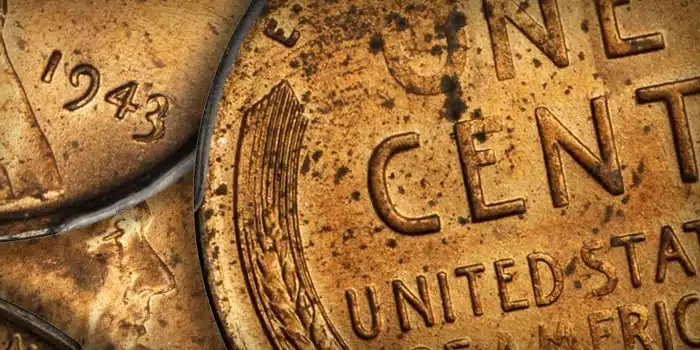In the world of coin collecting, few error coins are as legendary as the 1943 copper penny. This particular coin has captivated numismatists and collectors for decades due to its rarity and the fascinating story behind its creation. If you’re a coin enthusiast or simply curious about the history of U.S. currency, the 1943 copper penny is a must-know.
Why the 1943 Penny is Special
In 1943, the United States Mint faced a unique challenge: due to wartime metal shortages, they needed to switch from using copper to steel for the production of pennies. The shift was part of a larger effort to conserve copper for ammunition and other military needs during World War II. As a result, the Mint produced pennies with a steel core and a zinc coating, giving them a distinct appearance—a dull, silver-like color.
However, an incredibly small number of pennies were accidentally struck on copper planchets (the discs used to mint coins), which were intended for the production of bronze pennies prior to 1943. These error pennies, made of copper instead of steel, are extremely rare and highly sought after by collectors.
The Rarity of the 1943 Copper Penny
The 1943 copper penny is one of the most valuable error coins in existence. It’s estimated that only about 20 to 30 of these coins were mistakenly produced. The exact number is uncertain because many of these error pennies were lost, melted down, or unknowingly spent over time.
The first 1943 copper penny was discovered in 1947 by a man named George W. Drouillard, who found it in a coin jar at his workplace. Since then, these coins have become one of the most iconic and coveted pieces of American numismatics.
Why is the 1943 Copper Penny So Valuable?
The rarity of the 1943 copper penny is the main reason for its high value. With so few of these error coins in existence, collectors are willing to pay significant amounts to add them to their collections. In fact, a 1943 copper penny can sell for anywhere from $100,000 to over $1 million, depending on its condition and authenticity.
The rarity combined with the historical significance of the coin makes it a prized possession. The story behind the error is also a compelling one—how the U.S. Mint, in the midst of wartime pressures, accidentally produced a small batch of coins that have become a symbol of the importance of attention to detail in coin production.
How to Identify a 1943 Copper Penny
If you come across a 1943 penny and wonder whether it’s one of these rare copper errors, there are a few key things to look for. Here are some tips:
- Color: While most 1943 pennies were made from steel and coated with zinc, a copper penny will have the distinct reddish-brown hue typical of pre-1943 pennies.
- Weight: A 1943 copper penny will weigh more than the steel pennies, which are much lighter. A copper penny weighs about 3.11 grams, whereas a steel penny weighs only about 2.7 grams.
- Magnification: Under magnification, a copper penny will have a slightly different texture and finish compared to the shiny, smooth steel pennies. The copper planchet is also more likely to show signs of wear or oxidation.
How Much is a 1943 Copper Penny Worth?
The value of a 1943 copper penny depends on its condition, provenance, and authenticity. If you happen to own one, it’s worth having it professionally appraised. Coins in mint condition with original luster can fetch prices in the high six figures, while coins in less-than-perfect condition still carry considerable value.
It’s also important to verify that the coin is authentic, as there are several counterfeit 1943 copper pennies in circulation. Professional grading services such as the Numismatic Guaranty Corporation (NGC) or the Professional Coin Grading Service (PCGS) can help ensure your coin is genuine.
Final Thoughts
The 1943 copper penny is a fascinating piece of American coin history. With its rarity, unique backstory, and impressive value, it continues to captivate collectors and investors alike. Whether you’re a seasoned numismatist or someone just starting your collection, understanding the importance of error coins like the 1943 copper penny is key to appreciating the rich history of U.S. currency.
If you come across a 1943 penny in your collection or during your coin hunting, take a closer look—you could be holding a small but incredibly valuable piece of history.


